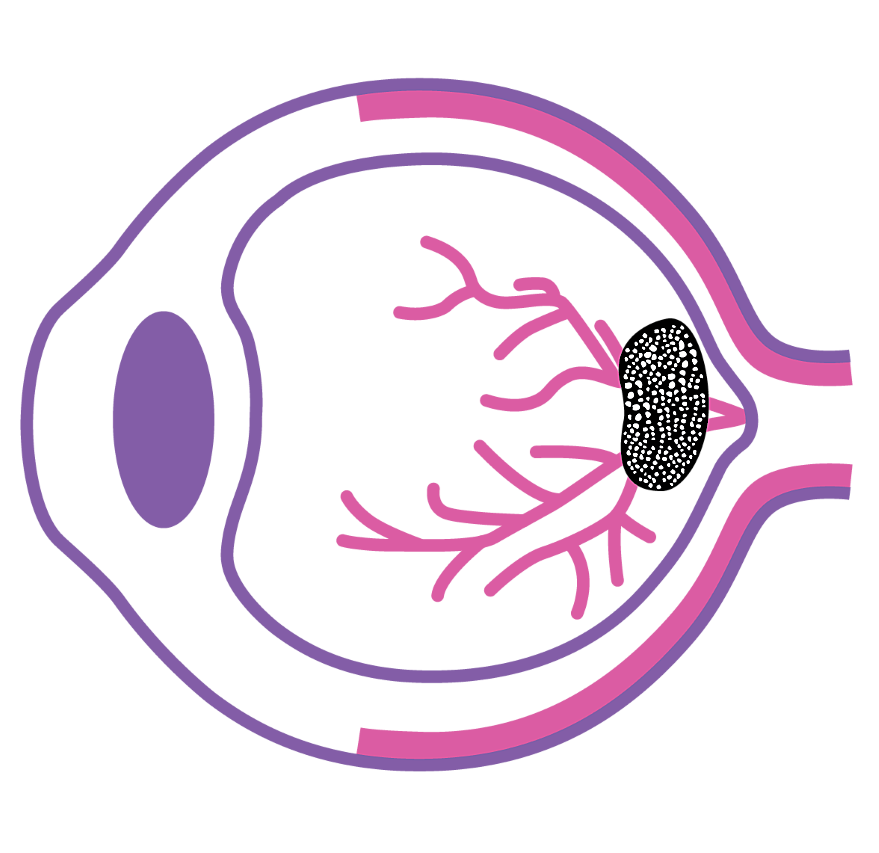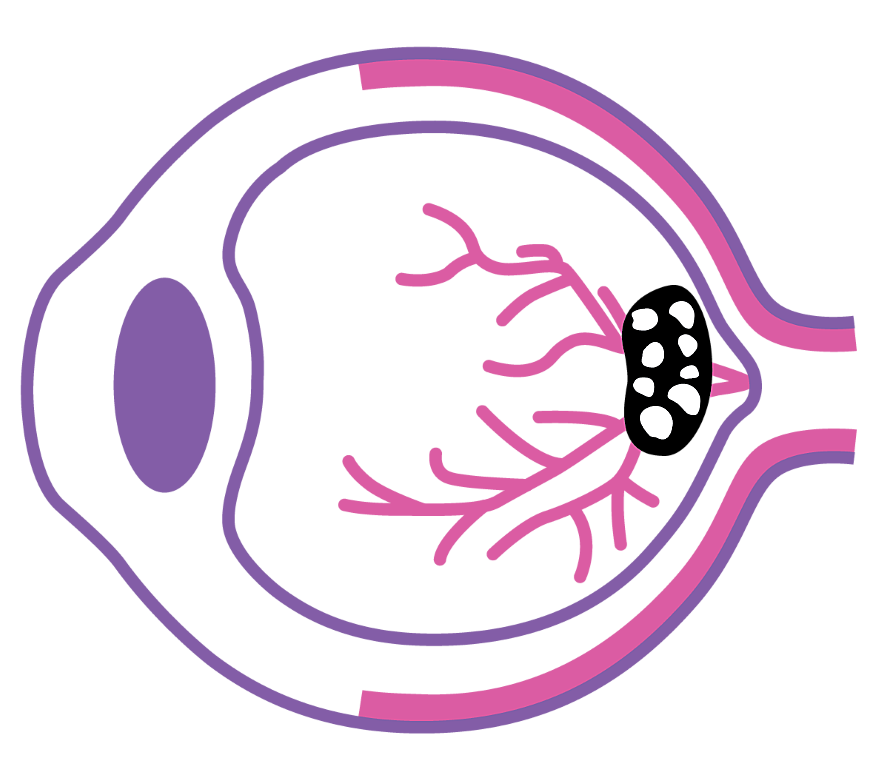AMD and DME Explained
Click below to find out about low vision conditions and how they can affect vision over time, including key symptoms and risk factors.
- Age-related macular degeneration
- Diabetes-related macular edema
What is age-related macular degeneration, or AMD?
AMD is a common condition caused by damage to the macula, the part of the eye responsible for central vision and seeing fine details clearly.
In most cases, AMD occurs as part of the ageing process and progresses slowly over time. The speed can change according to the type of AMD.

There are two types of AMD:

Dry AMD
Dry AMD refers to early stage AMD and occurs as the macular thins over time, affecting the cells responsible for seeing in colour and can result in challenges seeing in low lighting.
If left untreated, 10% of people with dry AMD will progress into wet AMD.

Wet AMD
Wet AMD refers to late-stage AMD and occurs when new blood vessels leak fluid or blood at the back of the eye, causing damage to the macular. Straight lines may appear to look wavy in central vision, colours less bright and hallucinations may occur.
Healthcare professionals refer to the condition AMD as `neovascular’, ‘wet’ or ‘dry’ depending on the type and stage of AMD, which are all correct medical terms. ‘Wet’ and ‘dry’ are widely recognised by the low vision community so are used across Visionaries materials. In some instances, individuals may use more medically recognised terminology like ‘neovascular’.
Symptoms
Symptoms of AMD vary from person to person. AMD can make activities like reading, watching TV or recognising faces difficult. Other symptoms include:
Risk factors
There are a number of factors which could increase the risk of developing DME, these include:
What is diabetes-related macular edema, or DME?
Diabetes-related macular edema (DME) is a common cause of low vision in people living with diabetes and results in a condition similar to wet AMD.
DME is a complication of living with diabetes, and is caused by the build up of fluid in the macula, responsible for central vision and seeing fine details clearly.
DME can severely impact a person’s quality of life by limiting the ability to perform daily tasks, increase loneliness and affect mental health. It is the leading cause of low vision among working-age people in the Western world.
Healthcare professionals refer to diabetes-related low vision conditions as `diabetic macular edema’ and `diabetic retinopathy’, which are the correct medical terms for these separate conditions. The patient community prefers to not use the term `diabetic’ for several reasons, so we might refer to the conditions as `diabetes-related’. Please note that we are describing the same conditions.

Edema in DME refers to the build-up of fluid in the eye as a result of blood vessels leaking in to the retina. This can cause swelling of the macula, which leads to blurred and weakened vision.
Symptoms
Symptoms of DME vary from person to person. In some cases, symptoms may not be experienced for some time. The main symptoms include:
Risk factors
There are a number of factors which could increase the risk of developing DME, these include:
Discover more on the Information Hub


Personalised healthcare
Providing the right care, for the right person, at the right time. Learn more and listen to podcasts exploring personalised healthcare and its potential in low vision.








